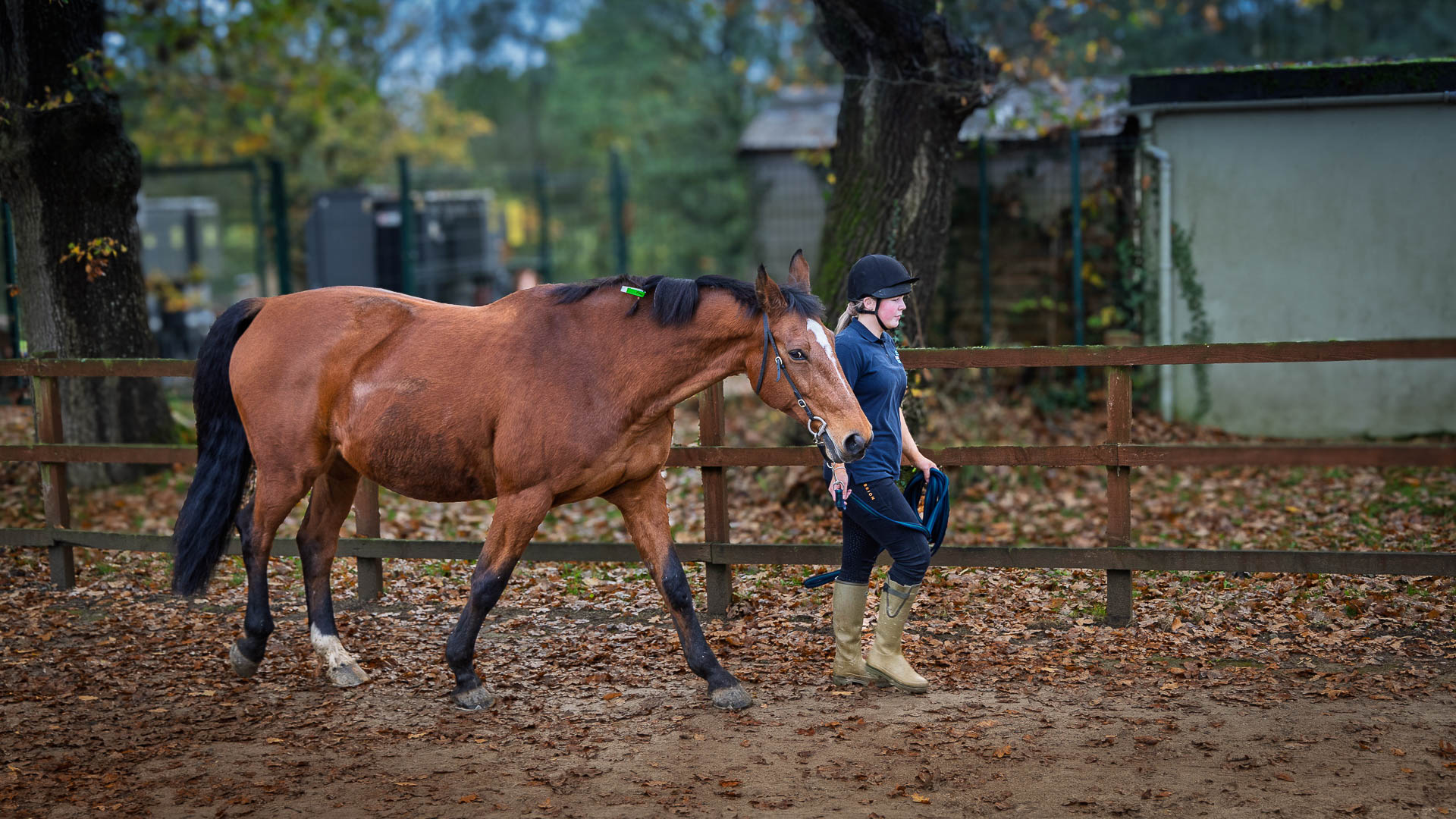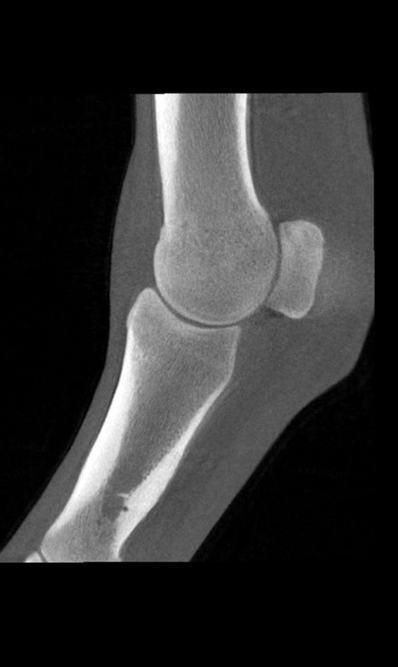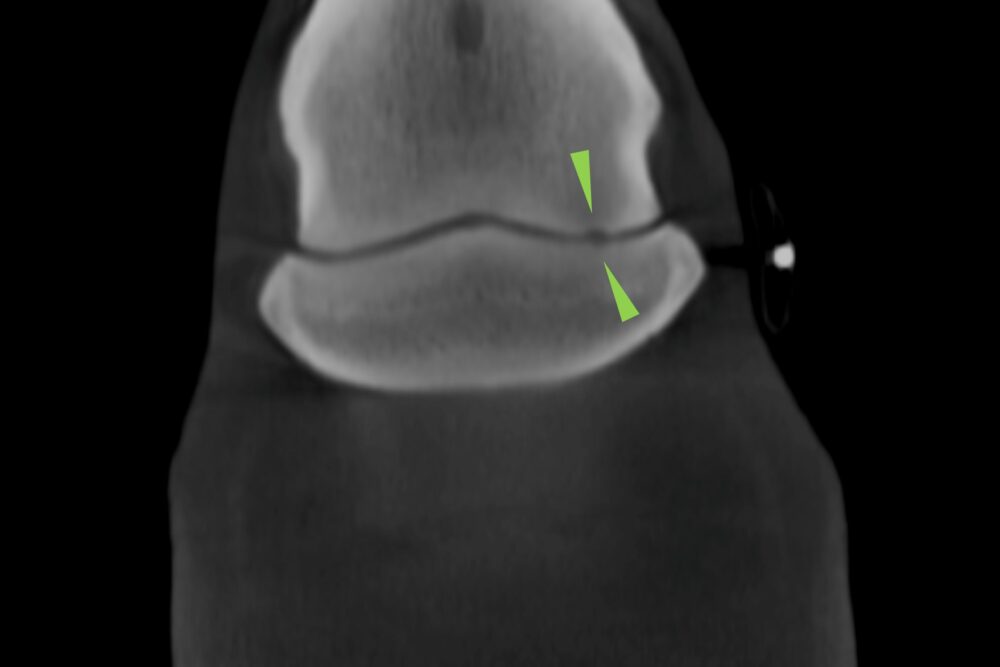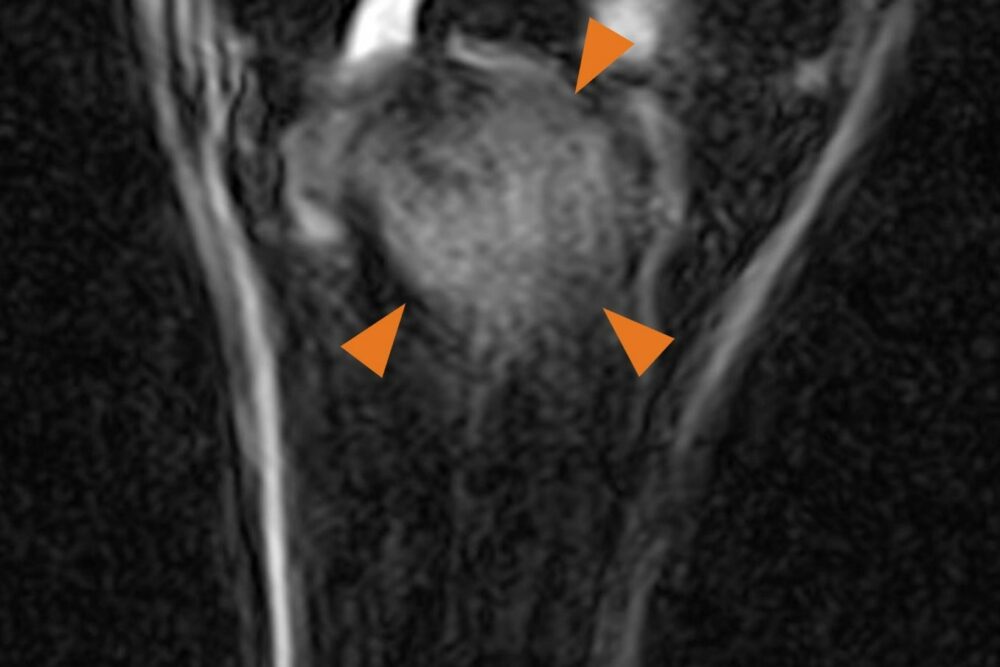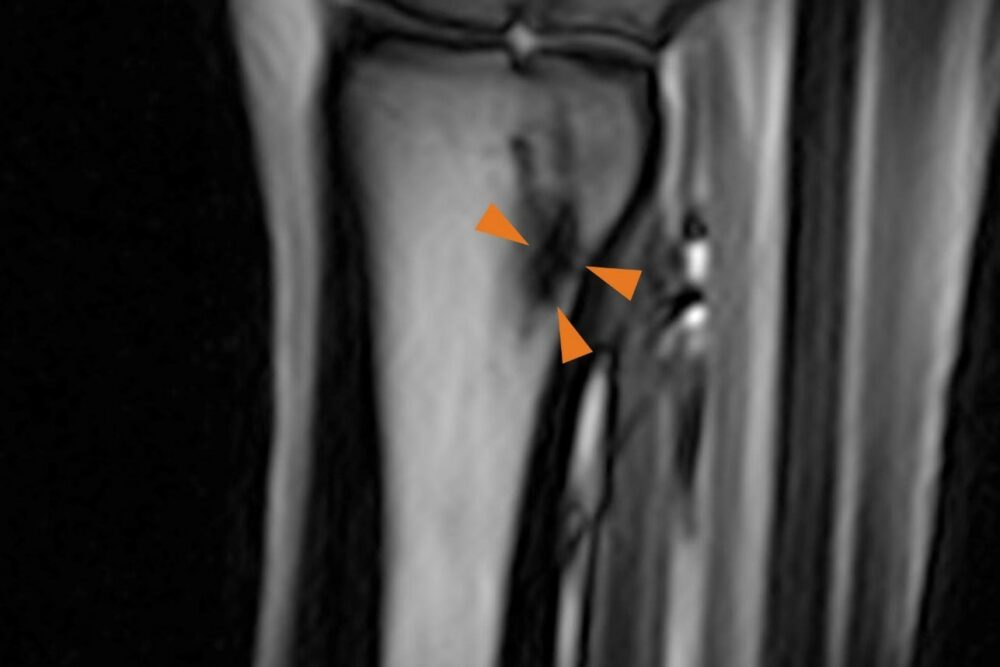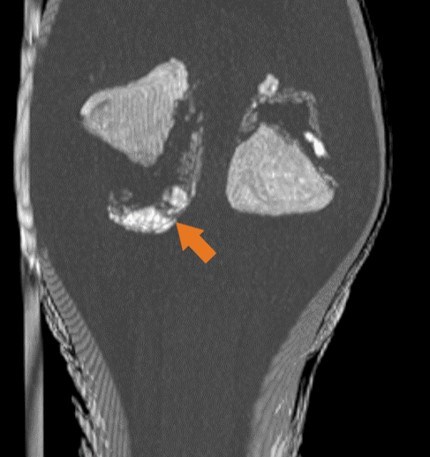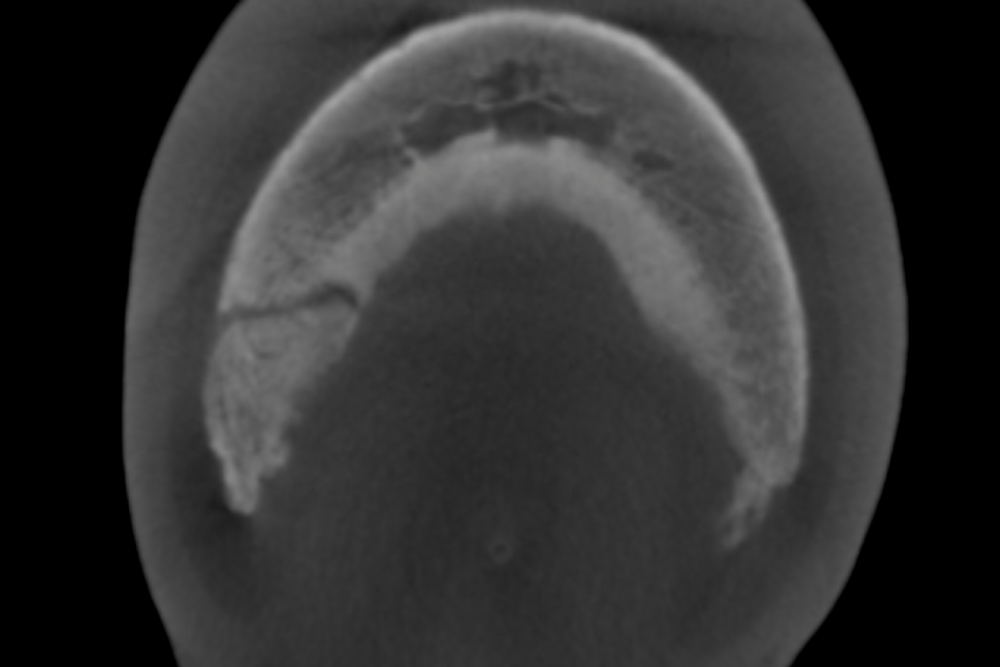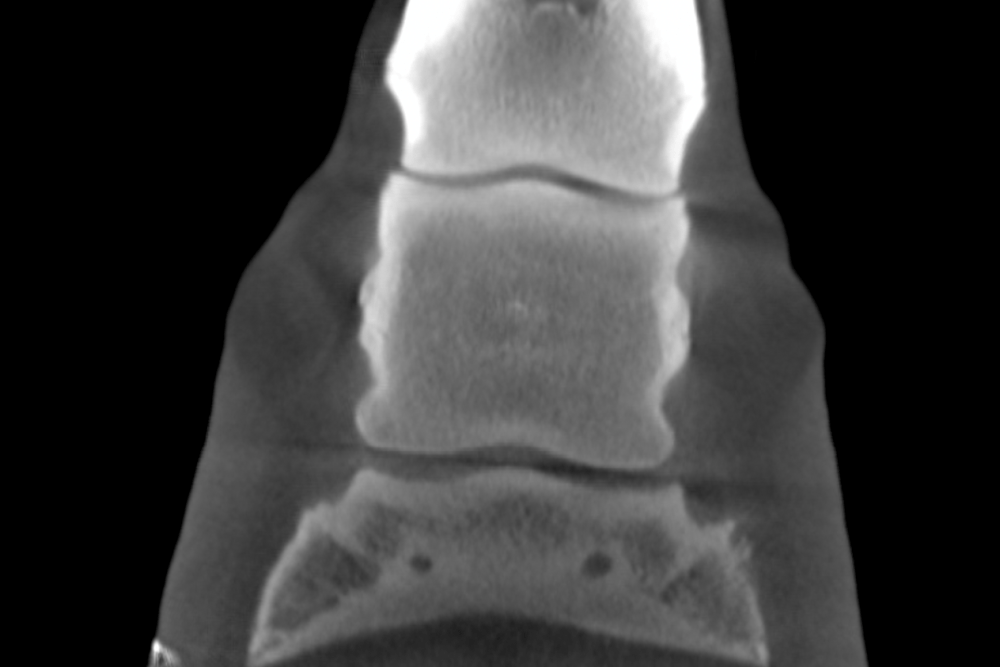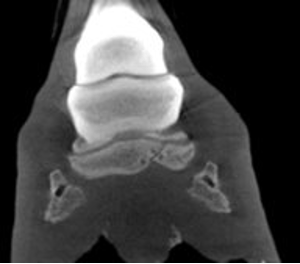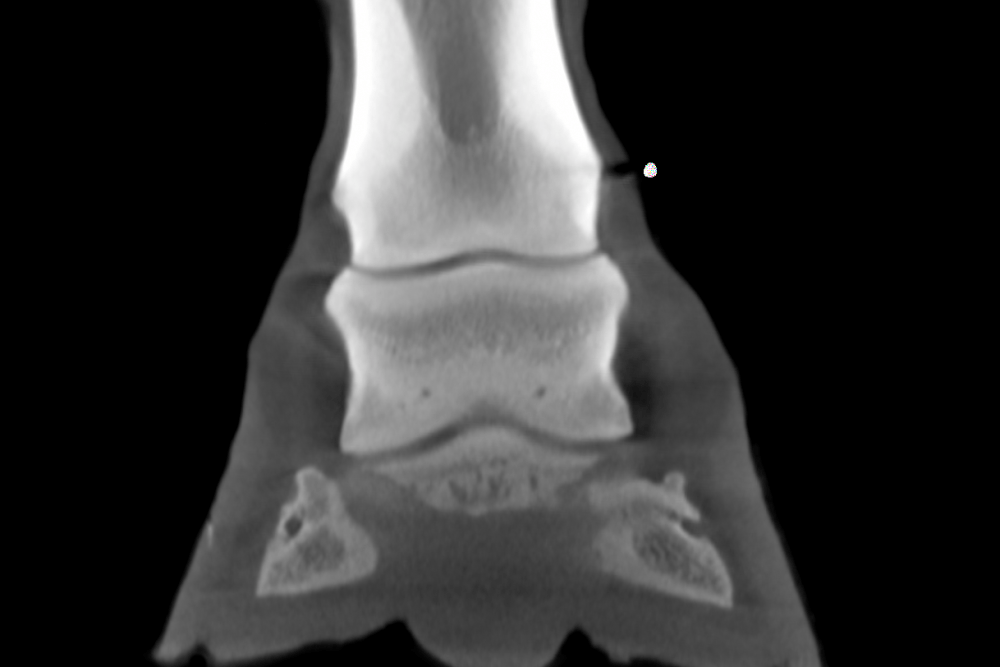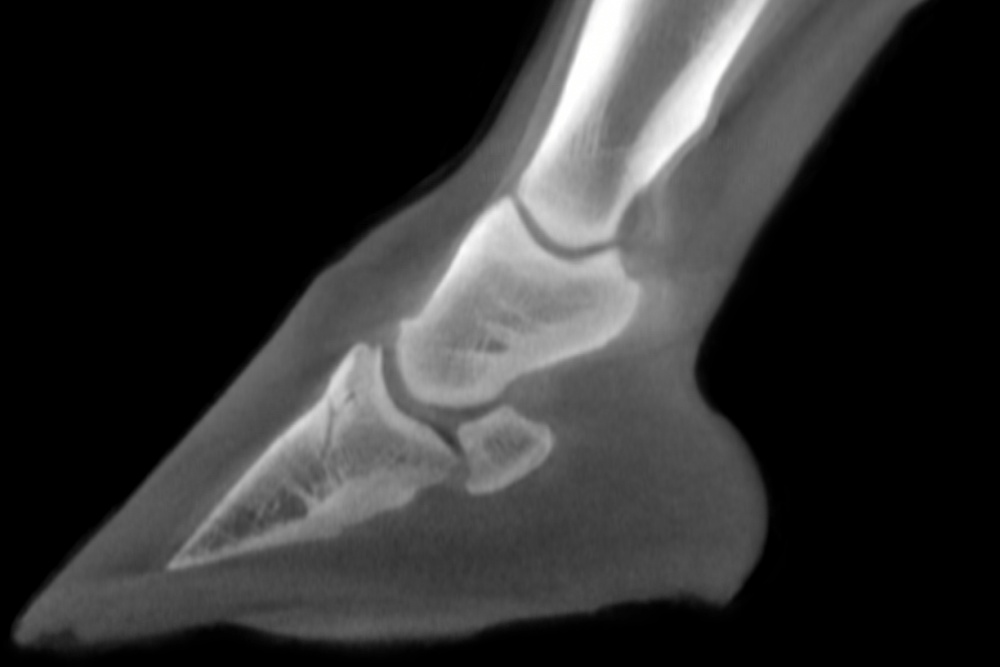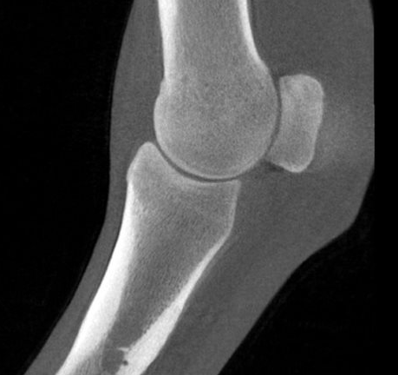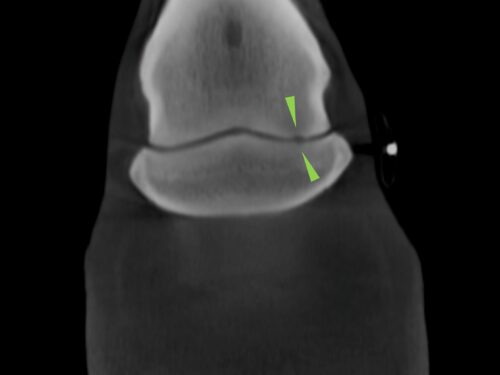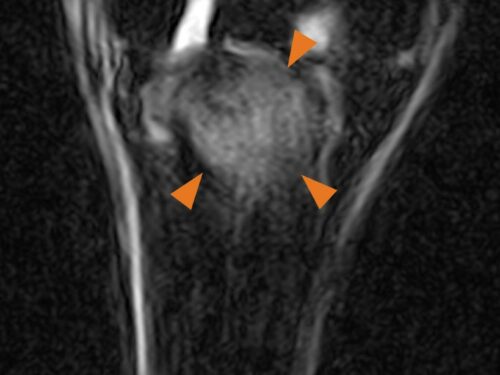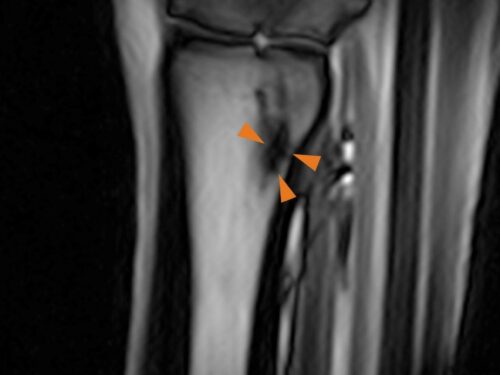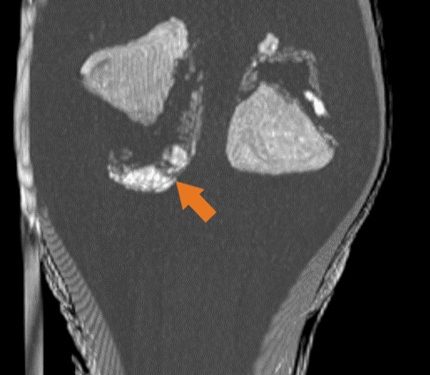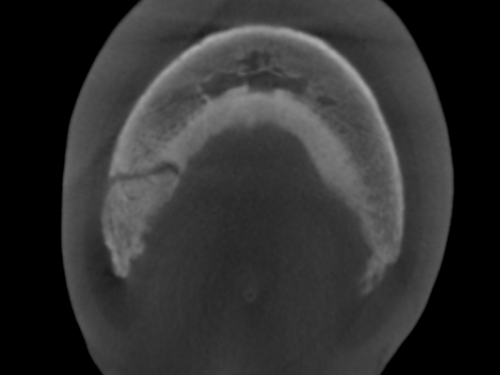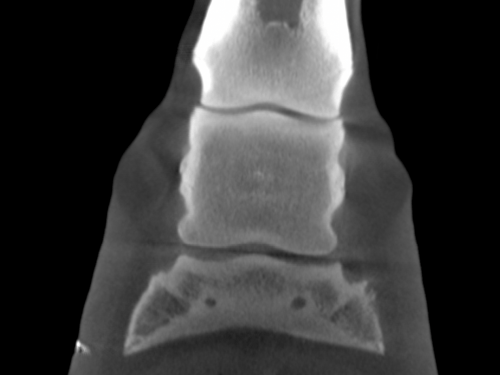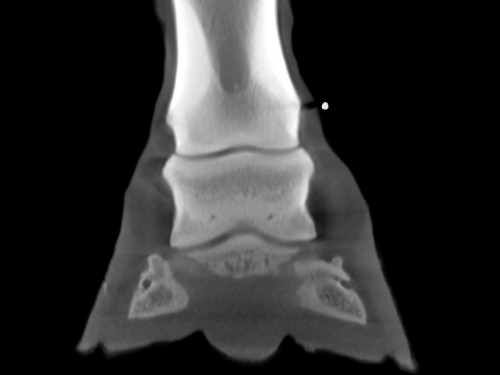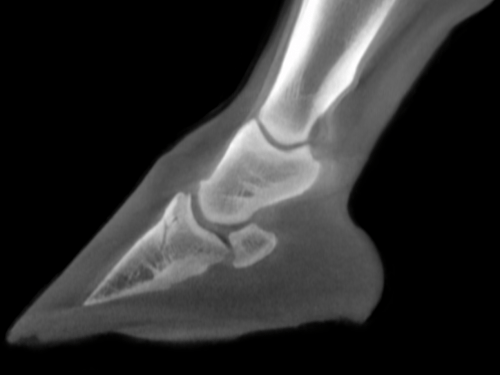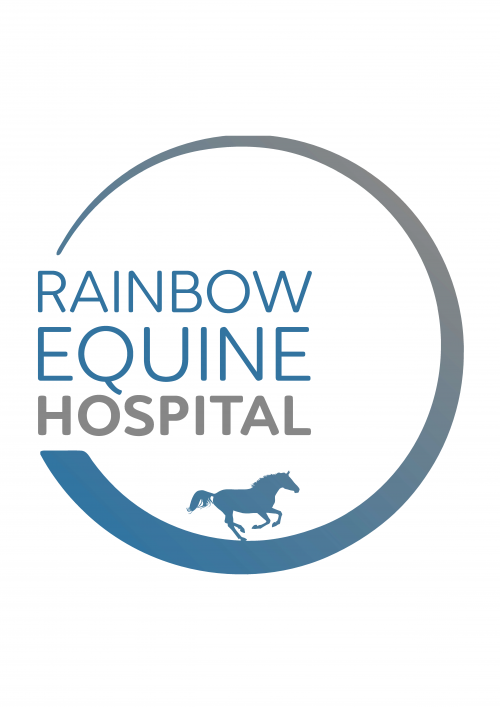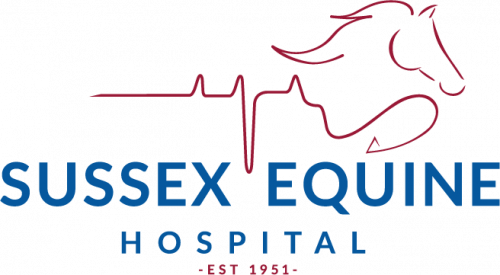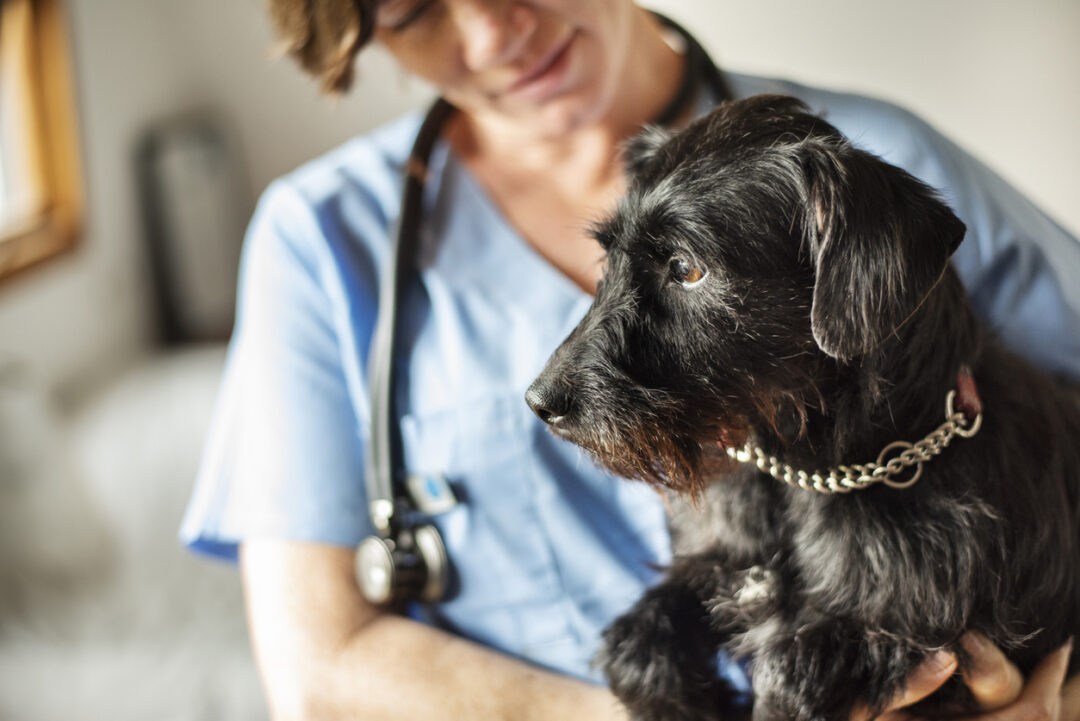Technology
How it works
Designed to image the distal limb of the standing, sedated horse, Vision CT captures 3D image sets in just minutes. With our walk-in-scan-walk-out design, the horse is unrestrained with easy entry and exit for safe, effective, and affordable advanced imaging
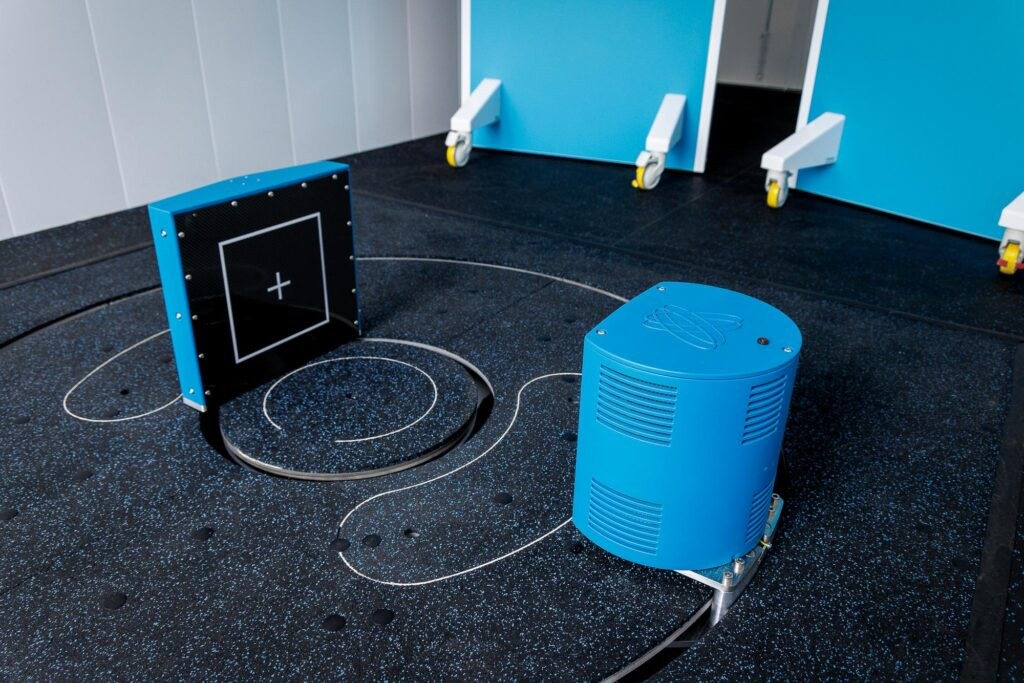
Details
Clinical uses
Surgical planning
Advanced pre-operative imaging to help determine the precise nature and location of pathology
Bony tissue differentiation
Detect non displaced fractures, small osteophytic lesions and evaluate cortical and sub-chondral bone
The complete picture
Obtain complementary clinical information when combined with Hallmarq’s unique Standing Equine MRI
Why CT?
Features & benefits
Safe for horse & handler
The walk-in, walk-out floor-level design allows for easy entry and exit. With no general anaesthesia required and low-dose radiation, both handler and horse are safe throughout the procedure.
Effective imaging
High spatial resolution detects small changes in the distal limb without anatomical overlap or distortion. Images in standard DICOM format allow flexible viewing from any angle.
Affordable
With minimal installation and operating costs, there’s no need for a custom-built room. Monthly payment plans make Vision CT profitable with as few as two cases per week.
Fast acquisition
The system captures high-quality 3D image sets in just minutes. Combined with our motion correction software, this enables faster and more accurate diagnosis than traditional radiographs.
Space efficient
The compact footprint requires no specialised room, making installation easy even in smaller clinics. Offer advanced imaging without major renovations or disruptions.
Q-Care support
Responsive system support, for minimal downtime and maximum efficiency. Maintain smooth operations for increased workflow and profitability.
Detailed Imaging
Clinical Gallery
Specifically designed to image the distal limb of the standing, sedated horse, Vision CT captures images for a more accurate diagnosis.
- Characterize foreign bodies in the hoof and assist with surgical planning
- Provide the answers in cases involving metallic objects
- Obtain a quantitative assessment of lesions and fracture lines
- Complement Standing Equine MRI
- Complement scintigraphic findings
- Better evaluate and characterize irregularities on the articular surface
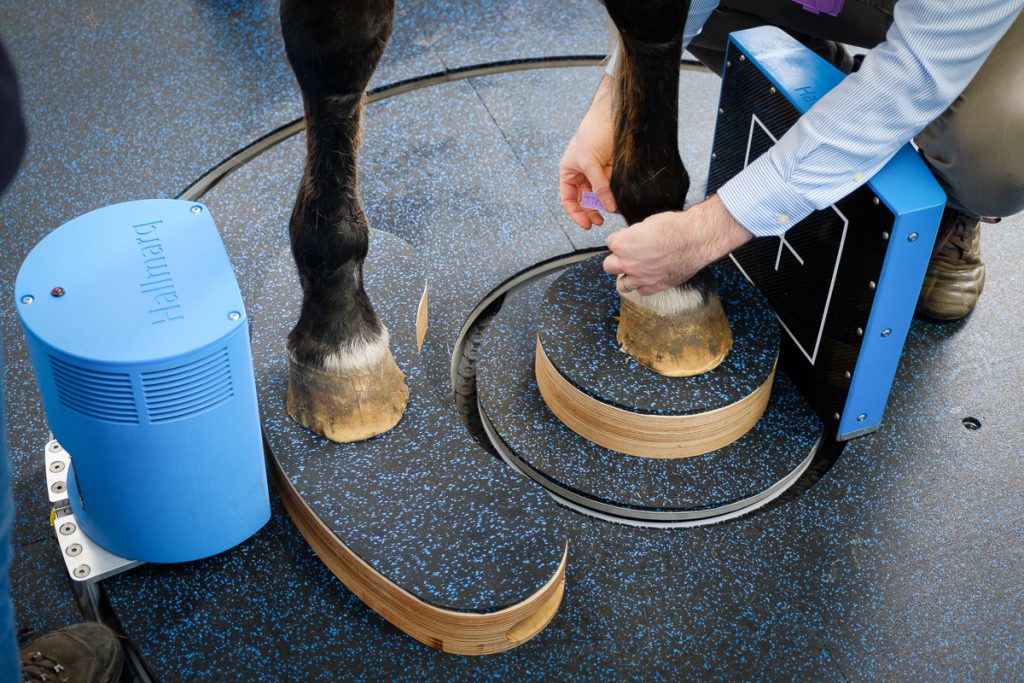
Safe
Keep horse and handler safe with our unique floor-level system for easy walk-in and walk-out access. With no need for general anesthesia, the gently sedated horse simply walks into the system for easy image acquisition. With less radiation than traditional fan beam CT, the technician remains in the room – behind a shielded screen – throughout the process. The scan can be paused at any time for a safe and easy exit if needed.
Effective
Looking for high-resolution, cross-sectional images for clearer differentiation of bony pathology? Bypass conventional imaging and step up to fast 3D imaging with cone beam technology. Distinguished by its sub-millimeter resolution and ability to perform detailed 3D reconstruction, Vision CT can provide a definitive diagnosis for improved treatment planning.
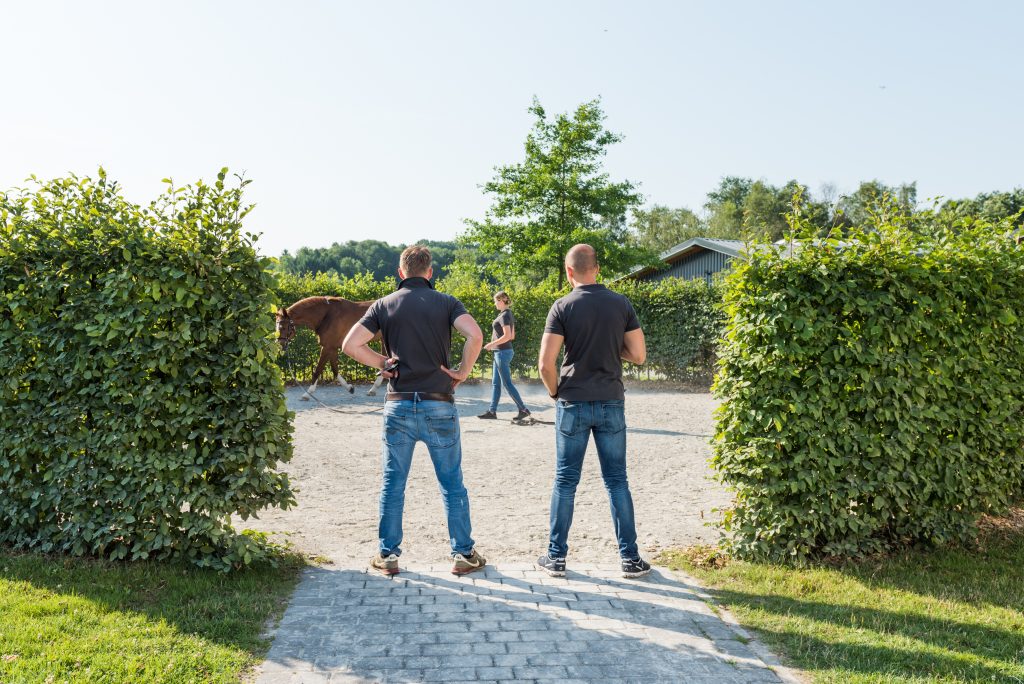

Affordable
Reduce your investment risk with our unique business model. With low installation costs, low running costs and no special power supply required, you can run a profitable CT service. With comprehensive support included, enjoy high case throughput with fast acquisition times. And, as an outpatient procedure with no need for general anesthesia, keep costs low and the demand on your team to a minimum.
FAQs
Frequently asked questions
Yes, whilst the Hallmarq Standing Equine Leg CT is accessible to most practices, it is also possible to refer patients. The referral clinic will need to know the case history and any previous diagnostic results. After a CT scan, they will provide an interpretation and radiological report. Other options may also be available by arrangement:
- suggestions regarding treatment and prognosis
- an explanation to the client, in the appropriate language
- further case management or treatment
Find a system
Our systems are available at some of the world’s leading veterinary facilities around the world. To find a Hallmarq MRI or CT machine near you, click below.
Find a siteDetails
Specifications
In planning for the installation of your Vision CT system, the high-level technical specifications below should be taken into consideration.
| System Specification | |
|---|---|
| Generator | Cone Beam |
| 80kV/1.25mA | |
| Form Factor | Open |
| Equipment moves in concentric circles | |
| Speed | 360 degrees in one minute |
| FOV | 200mm per side (and 160mm high) cuboid |
| 160mm high | |
| Slice Thickness | 0.25mm |
| Scan Velocity | 1 rpm |
| Current Coverage | Distal limb |
| Motion Correction | Yes |
| GA | Not required |
| System Components | |
|---|---|
| Complete CT System | Source/detector/platform/footrest |
| Computer/keyboard/mouse/software/cabling | |
| Two operator shields | |
| User Manual | |
| CT Mainframe | 375.90 kg |
| 2000mm L x 2000mm W x 250mm H | |
| Side Extension Platform | 72.99 kg |
| 1500mm L x 600mm W | |
| Front Extension Platform | 1000mm L x 2000mm W |
| Ramp | 68.00 kg |
| 1000mm L x 1900mm W | |
| Ramp Side Extension | 20.00 kg |
| 750mm L x 600mm W | |
| Console Unit | 610mm L x 1000mm W x 900mm H |
| Radiation Screen | 60mm L x 1210mm W x 1990mm H |
| Electronics | |
|---|---|
| Powered from a regular single phase household standard supply: UK – 110-230V 4A max USA – 110V Europe – 220V | |
| Internet connection required with 500KB minimum band width |
| Software | |
|---|---|
| Modern clinical user interface | |
| Simple and easy to use | |
| Choice of multiple scan types | |
| PACS integration | |
| Built in back-up data | |
| Motion correction algorithm for improved images | |
| User-selectable reconstruction options |
Q-Care
Supporting your success
Providing high-quality images is just the beginning. With an unrivalled programme designed to add value to your practice, we’re here to help optimise your imaging service – from initial enquiry through to installation and beyond.
